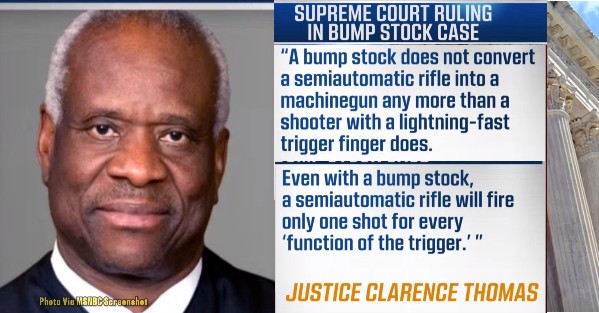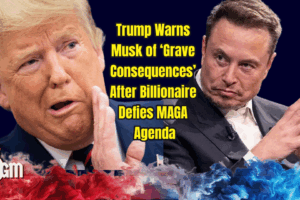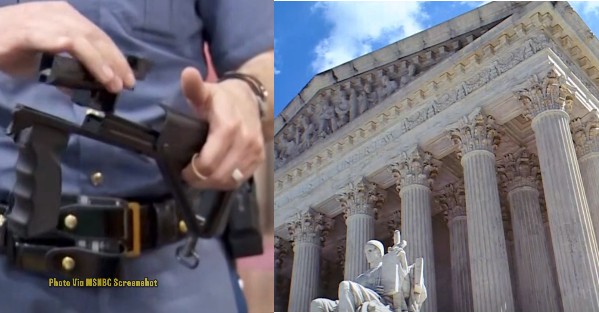In a highly contentious ruling, the Supreme Court of the United States dominated by the GOP Super Majority has lifted the federal ban on bump stocks, a gun accessory that allows semi-automatic rifles to fire at a rate similar to fully automatic weapons. The decision comes as a significant blow to gun control advocates and reignites the heated debate over the regulation of these devices.
The bump stocks ban was initially implemented by former President Donald Trump’s administration in the wake of the 2017 Las Vegas mass shooting, where the perpetrator utilized the accessory to deadly effect. By enabling semi-automatic rifles to mimic the rapid-fire capabilities of machine guns, bump stocks have been widely criticized as a threat to public safety.
Public Opinion on Controversial Decisions of a Divisive Court
Critics of the court’s decision on bump stocks argue that the ruling demonstrates a disregard for common sense and public safety, particularly in light of the nation’s history of mass shootings. They contend that keeping such dangerous accessories out of the hands of civilians should be a self-evident priority.
Supporters of the ruling, however, celebrate it as a victory for Second Amendment rights and a rebuke of what they perceive as overreaching government regulation. They argue that the ban on bump stocks was an unconstitutional infringement on the rights of law-abiding gun owners.
The Las Vegas Tragedy Revisited
The ruling draws renewed attention to the horrific events of the 2017 Las Vegas mass shooting, where a lone gunman, equipped with bump stocks, opened fire on a crowd attending a country music festival. The tragedy claimed the lives of 60 individuals and left over 400 others wounded, underscoring the devastating potential of these accessories.
As the nation grapples with the implications of this ruling, debates over gun control, public safety, and constitutional rights are set to intensify. The Supreme Court’s decision on bump stocks has reignited a polarizing issue that has long divided Americans, and the ripple effects of this ruling are likely to reverberate for years to come.

Justice Thomas’ Mechanical Unreasonable Reasoning on Bump Stocks
In the 6-3 majority decision, written by Justice Clarence Thomas, the court’s focus was primarily on the mechanical aspects of bump stocks. Thomas argued that firing multiple shots using a semi-automatic rifle with a bump stock requires more than a single function of the trigger, a key distinction from the legal definition of a machine gun. Legal experts and gun enthusiasts have widely criticized and ridiculed Justice Clarence Thomas’s opinion, considering it a flawed argument. Gun experts argue that no human finger can pull the trigger at the rapid pace at which a gun equipped with bump stock fires multiple bullets within a second.
The majority opinion centered on the technicalities of the device’s operation, contending that the act of firing multiple rounds still involves additional physical input beyond the initial trigger pull. This narrow interpretation of the law’s language formed the crux of Thomas’ rationale for lifting the ban.
Justice Sotomayor’s Scathing Dissent
In a scathing dissent penned by Justice Sonia Sotomayor, joined by her liberal colleagues, the court’s decision was met with fierce criticism. Sotomayor lambasted the majority for prioritizing mechanical minutiae over the practical realities and deadly consequences of bump stocks.

Drawing an analogy, she stated, “When I see a bird that walks like a duck, swims like a duck, and quacks like a duck, I call that bird a duck.” Applying this logic to bump stocks, she asserted, “A bump stock makes a semi-automatic rifle fire automatically, more than one shot without manual reloading by a single function of the trigger. Because I, like Congress, call that a machine gun, I respectfully dissent.”
A Divide Over Consequences and Public Safety
The stark contrast between the majority’s focus on mechanical technicalities and the dissent’s emphasis on practical consequences and public safety underscores the deep divide within the court on this issue.
While the majority opinion adhered to a narrow interpretation of the law’s language, the dissenting justices argued that such a rigid approach disregards the accessory’s capacity for enabling rapid, indiscriminate fire and the associated risks to public safety.
This philosophical rift within the court highlights the complexity of the debate surrounding bump stocks and the challenge of reconciling legal interpretations with real-world implications, particularly in the realm of gun control and public safety.














